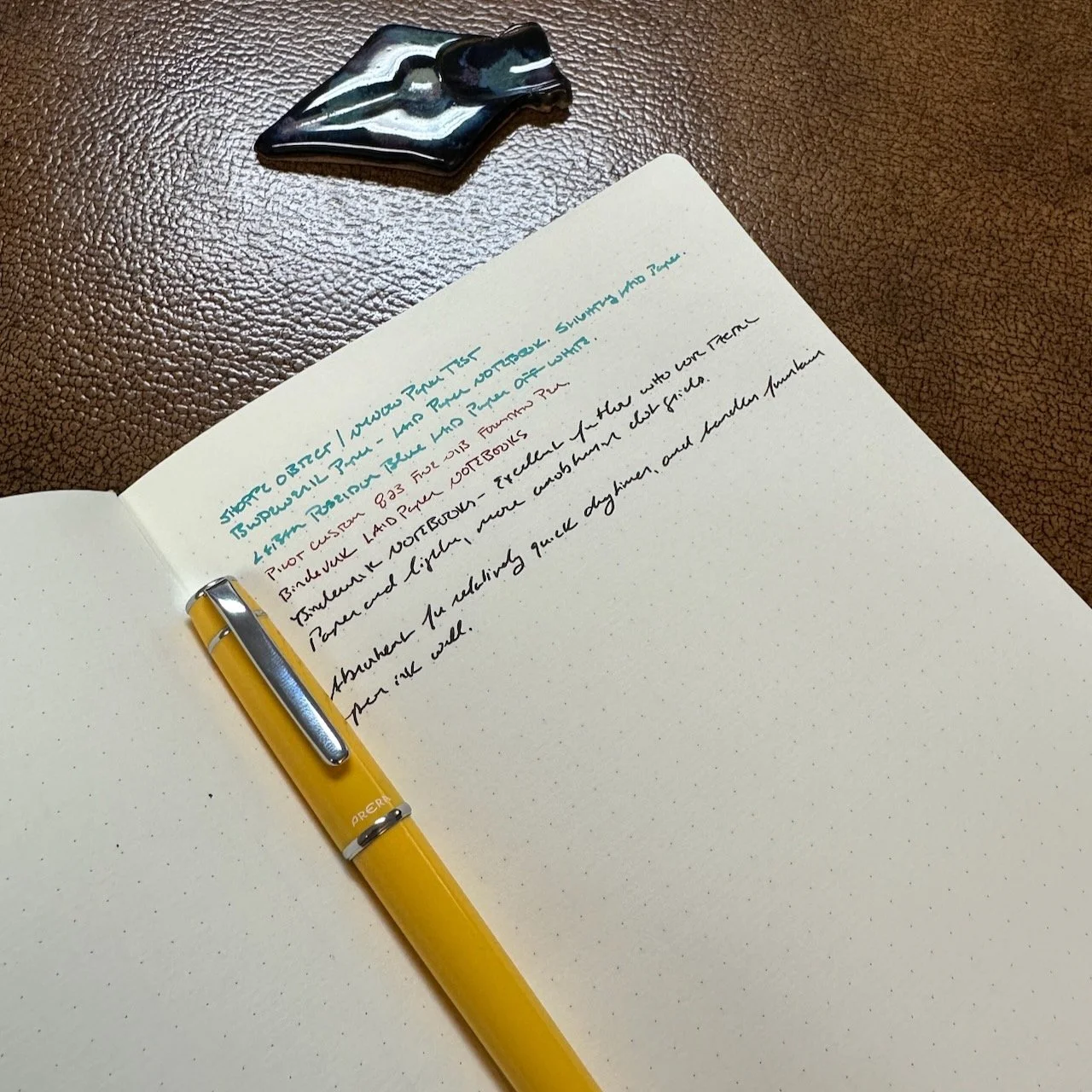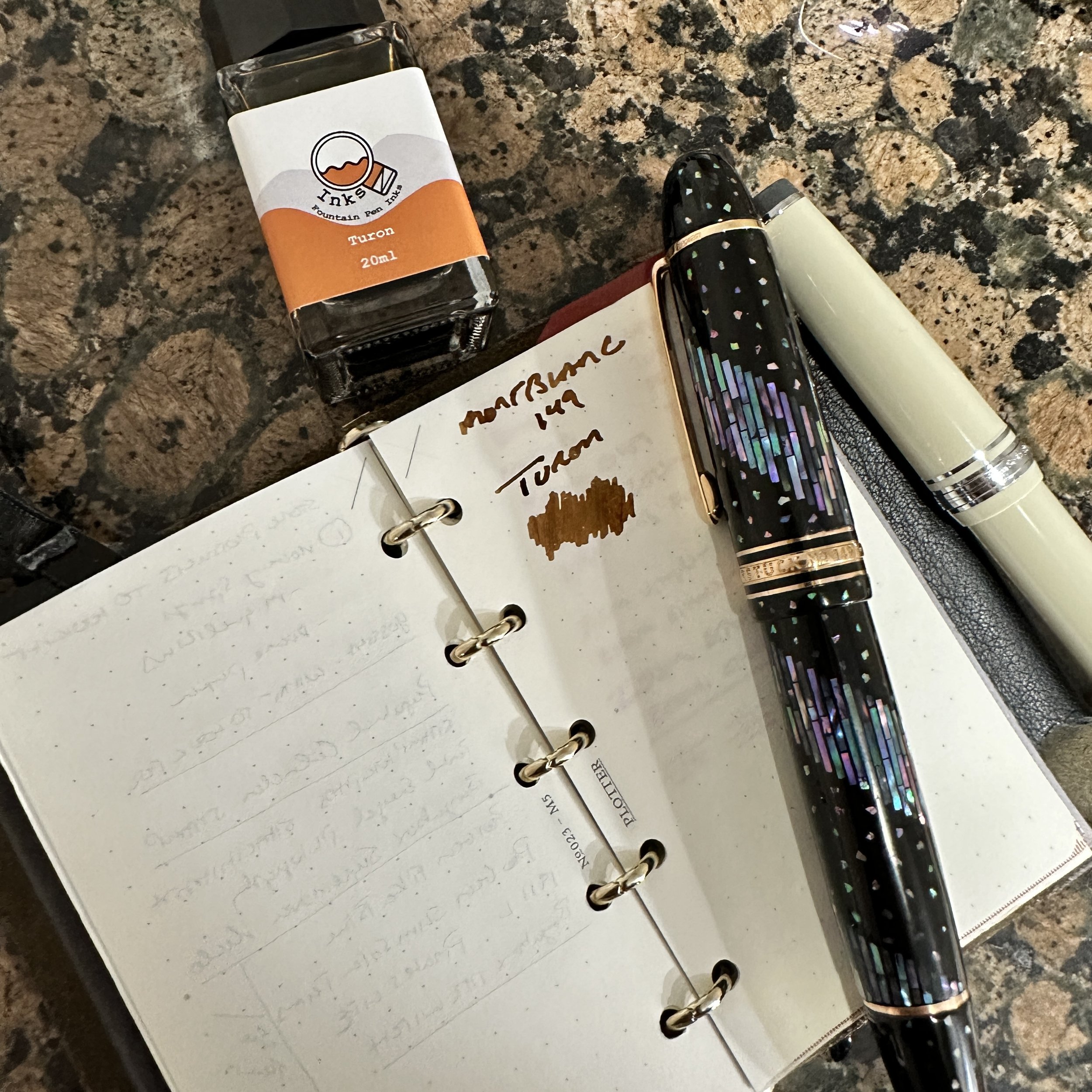I’ve been building up to including these flexible linen Bindewerk notebooks in our curation, and was finally able to bring in a fun selection of covers in dot, lined, and at least one blank variant.
Bindewerk notebooks are handmade in Germany, and feature lightly textured/laid paper with an unobtrusive dot grid that disappears while you write. The flexible cover opens and lies relatively flat, for a comfortable writing experience both on the go and at your desk. The paper is excellent with fountain pens, and absorbent with relatively quick dry times. I already have a yellow one lined up for my next journal!
Be sure to check out these and the rest of our Curated Paper offerings in both our online and brick-and-mortar stores. Our Nashville shop will be open standard hours this week, from 1pm-6pm Thursday and Friday, and from 10am-6pm on Saturday. Please note that we have moved the shop/showroom area from Suite 113 to Suite 107, so look for us on the front of the building.


